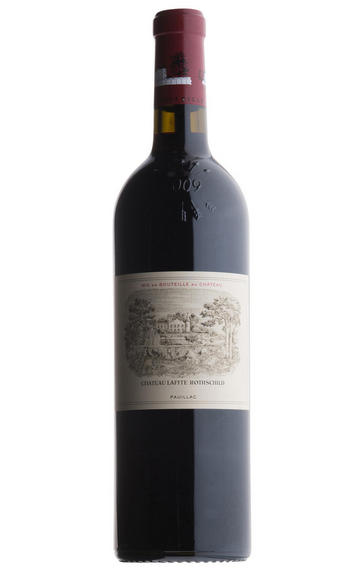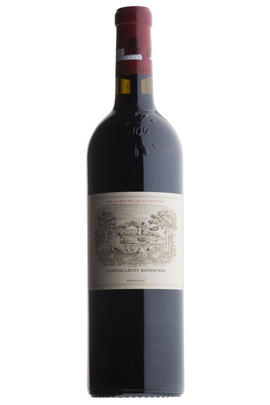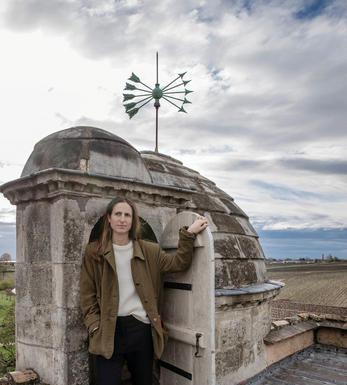
1982 Château Lafite Rothschild, Pauillac, Bordeaux

Critics reviews
A dream year: volume and quality. What was happening? Dry and mild spring without frost. Excellent flowering in June, early. Very dry and very hot summer. A little rain, regular showers, freshness and sunshine in August. September was particularly hot and dry.
Very good harvest conditions, early as from 9 September, with a very large crop. Perfectly ripe grapes, sugar, alcohol. Vinification was difficult to control because of high fermentation temperatures. In the vat rooms, it smelt of hot fruit and jam. Soft, warm, approachable wines were produced, some even called flattering wines.
Not the most concentrated nor long-living 1982 though lovely to drink now. Perfumed, mineral, salty, long and juicy with a slightly drying finish. But overall transparent and nervy with some fine Lafite quality.
Drink 1998 - 2030
Jancis Robinson MW, jancisrobinson.com (May 2018)
The 1982 Lafite Rothschild is at the peak of its powers today, and the two bottles I drank this year were both exceptional. Wafting from the glass with aromas of sweet red berries and blackcurrants mingled with notions of cedar chest, cigar box, camphor and dried flowers.
It’s medium to full-bodied, supple and seamless, with an effortlessly elegant, harmonious profile and a long, fragrant finish. While this is far from being the most powerful Médoc of the vintage, it is among the most pleasurable.
Drink 2012 - 2045
William Kelley, Wine Advocate (December 2022)
The nose is subdued at first and needs time and patience in the glass before a beautifully smoky cigar box just explodes out. Here again, there are fireside brick red notes around the edge of the glass, with a deeper rich red core.
The fruit is just starting to edge from tight cassis to soft, wild strawberries mixed with cedar and liquorice root finessing. That classic menthol freshness of a great Pauillac is evident on the finish, keeping this very much in line.
This has all the signatures of Lafite Rothschild – it’s not trying to be the most concentrated or burly wine here, and yet it just keeps on delivering something new with every sip.
Drink 2018 - 2040
Jane Anson, Decanter.com (May 2018)
About this WINE

Château Lafite Rothschild
The iconic Château Lafite Rothschild was classified as a first growth in 1855 and has been in the Rothschild family since 1868. Today, Lafite is headed up by Saskia de Rothschild, daughter of long-time steward Baron Eric de Rothschild.
Château Lafite Rothschild is an iconic first-growth property in the Pauillac appellation of Bordeaux, France. It achieved its top-tier rank in 1855 and has been in the Rothschild family since 1868. Today, Lafite is headed up by Saskia de Rothschild, daughter of long-time steward Baron Eric de Rothschild.
The property is located at the northern tip of Pauillac, separated by St Estèphe by marshland and the Jalle de Breuil stream. Two areas of the vineyard are particularly notable: the gravel plateau, which is the heart of the grand vin; and the Plateau de Carruades, from which Lafite’s second wine takes its name. The vineyard is planted mostly to Cabernet Sauvignon (70%), along with Merlot (25%), Cabernet Franc (3%) and Petit Verdot (2%).
A new cellar was completed here in time for the 2011 harvest, with a combination of stainless steel and concrete tanks, of varying sizes. The barrels come from Lafite’s own cooperage, located not far from the property.
In addition to its 110 hectares of vines, the estate has 300 hectares of woods and marshes. The team consider this to be an integral part of the ecosystem.

Pauillac
Pauillac is the aristocrat of the Médoc boasting boasting 75 percent of the region’s First Growths and with Grand Cru Classés representing 84 percent of Pauillac's production.
For a small town, surrounded by so many familiar and regal names, Pauillac imparts a slightly seedy impression. There are no grand hotels or restaurants – with the honourable exception of the establishments owned by Jean-Michel Cazes – rather a small port and yacht harbour, and a dominant petrochemical plant.
Yet outside the town, , there is arguably the greatest concentration of fabulous vineyards throughout all Bordeaux, including three of the five First Growths. Bordering St Estèphe to the north and St Julien to the south, Pauillac has fine, deep gravel soils with important iron and marl deposits, and a subtle, softly-rolling landscape, cut by a series of small streams running into the Gironde. The vineyards are located on two gravel-rich plateaux, one to the northwest of the town of Pauillac and the other to the south, with the vines reaching a greater depth than anywhere else in the Médoc.
Pauillac's first growths each have their own unique characteristics; Lafite Rothschild, tucked in the northern part of Pauillac on the St Estèphe border, produces Pauillac's most aromatically complex and subtly-flavoured wine. Mouton Rothschild's vineyards lie on a well-drained gravel ridge and - with its high percentage of Cabernet Sauvignon - can produce (in its best years) Pauillac's most decadently rich, fleshy and exotic wine.
Latour, arguably Bordeaux's most consistent First Growth, is located in southern Pauillac next to St Julien. Its soil is gravel-rich with superb drainage, and Latour's vines penetrate as far as five metres into the soil. It produces perhaps the most long-lived wines of the Médoc.
Recommended Châteaux
Ch. Lafite-Rothschild, Ch. Latour, Ch. Mouton-Rothschild, Ch. Pichon-Longueville Baron, Ch. Pichon Longueville Comtesse de Lalande, Ch. Lynch-Bages, Ch. Grand-Puy-Lacoste, Ch, Pontet-Canet, Les Forts de Latour, Ch. Haut-Batailley, Ch. Batailley, Ch. Haut-Bages Libéral.

Cabernet Sauvignon Blend
Cabernet Sauvignon lends itself particularly well in blends with Merlot. This is actually the archetypal Bordeaux blend, though in different proportions in the sub-regions and sometimes topped up with Cabernet Franc, Malbec, and Petit Verdot.
In the Médoc and Graves the percentage of Cabernet Sauvignon in the blend can range from 95% (Mouton-Rothschild) to as low as 40%. It is particularly suited to the dry, warm, free- draining, gravel-rich soils and is responsible for the redolent cassis characteristics as well as the depth of colour, tannic structure and pronounced acidity of Médoc wines. However 100% Cabernet Sauvignon wines can be slightly hollow-tasting in the middle palate and Merlot with its generous, fleshy fruit flavours acts as a perfect foil by filling in this cavity.
In St-Emilion and Pomerol, the blends are Merlot dominated as Cabernet Sauvignon can struggle to ripen there - when it is included, it adds structure and body to the wine. Sassicaia is the most famous Bordeaux blend in Italy and has spawned many imitations, whereby the blend is now firmly established in the New World and particularly in California and Australia.


Buying options
Add to wishlist
Description
A dream year: volume and quality. What was happening? Dry and mild spring without frost. Excellent flowering in June, early. Very dry and very hot summer. A little rain, regular showers, freshness and sunshine in August. September was particularly hot and dry.
Very good harvest conditions, early as from 9 September, with a very large crop. Perfectly ripe grapes, sugar, alcohol. Vinification was difficult to control because of high fermentation temperatures. In the vat rooms, it smelt of hot fruit and jam. Soft, warm, approachable wines were produced, some even called flattering wines.
Not the most concentrated nor long-living 1982 though lovely to drink now. Perfumed, mineral, salty, long and juicy with a slightly drying finish. But overall transparent and nervy with some fine Lafite quality.
Drink 1998 - 2030
Jancis Robinson MW, jancisrobinson.com (May 2018)
wine at a glance
Delivery and quality guarantee